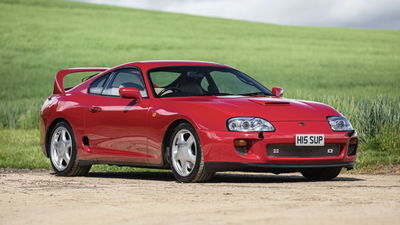The UK Government Could Crack Down On Ultra-Bright Headlights

We’ve all been there: happily driving along a rural road at night time, when we’re suddenly met with a fierce beam of ultra-bright light coming the other way. No, it’s not aliens – it’s probably just a BMW X5.
Car headlight tech has been improving for a long time now, with xenons, LEDs and, in the case of some Audis, frickin’ laser beams steadily replacing traditional halogen bulbs, especially in higher-end cars.

The view ahead provided by lighting technology like this is indisputably brilliant, but according to a study released at the beginning of 2024 by the RAC, it’s contributing to the view that headlight glare is a prevalent road safety issue and one that’s only getting worse.
89 per cent of 2000 drivers surveyed felt that some modern car headlights are too bright. Meanwhile, 85 per cent perceived the issue of glare as getting worse.

The issue doesn’t just boil down to ultra-bright headlights, though: misaimed headlights are also raised as a contributing factor, and according to the study, around 1.6 million MOT tests between 2019 and 2023 were failed for this reason.
The seemingly unstoppable rise of the SUV is also cited, with cars sitting higher above the road bringing even dipped beams closer to the eye level of drivers of lower-down cars. In fact, of those surveyed by the RAC who drove ‘conventional’ cars like saloons and hatches, 62 per cent specifically blamed higher-riding vehicles for the dazzling issue.

Based on the RAC study, as well as a government petition which, at the time of writing, has around 11,700 signatures, the UK government has confirmed in a statement that it “intend[s] to commission independent research shortly.”
Headlight brightness is ultimately a fine line to tread in terms of safety, but almost all of us have likely encountered something coming the other way on a dark road that’s led to us asking ourselves: how bright is too bright?















Comments
No comments found.